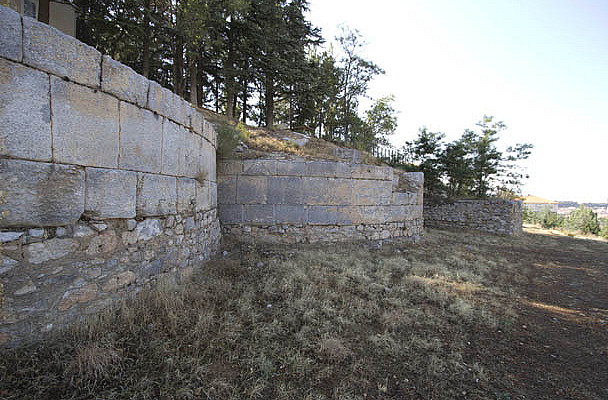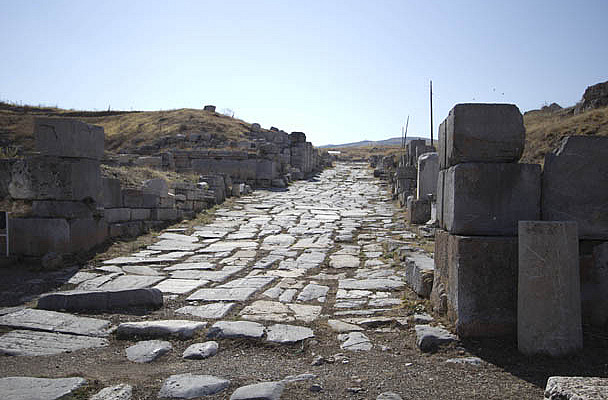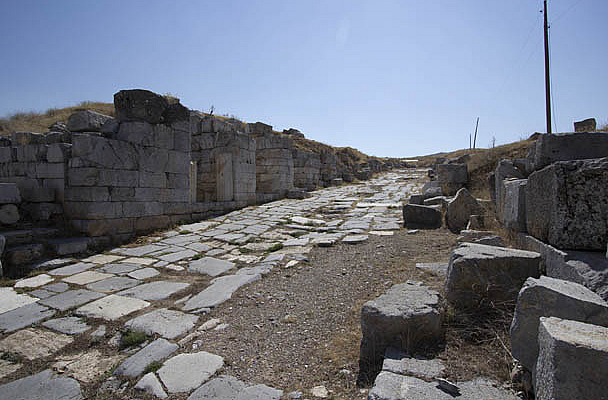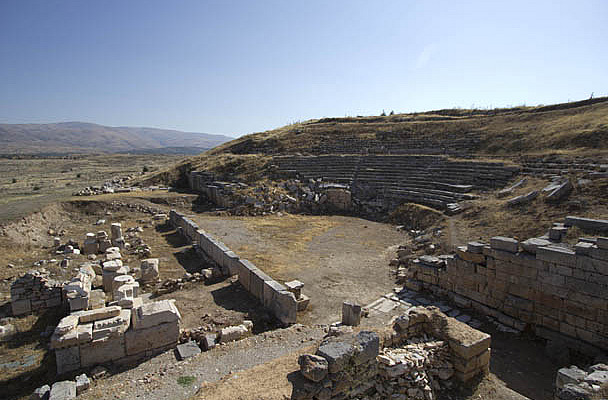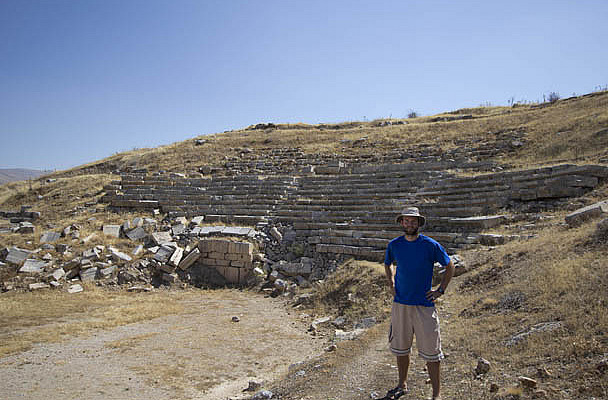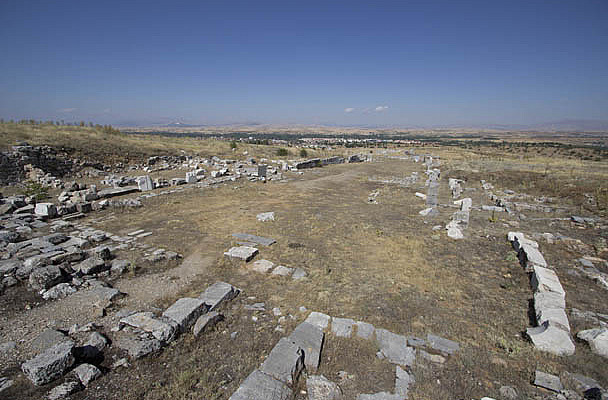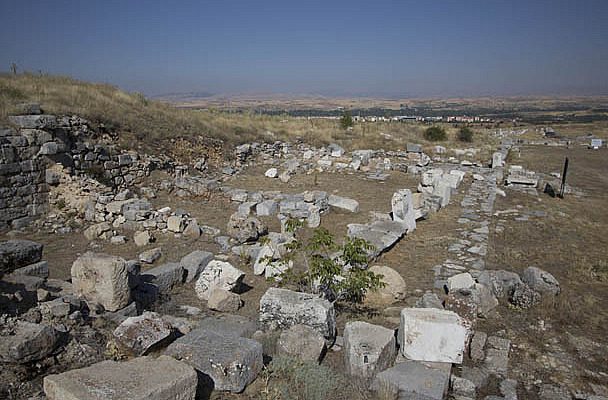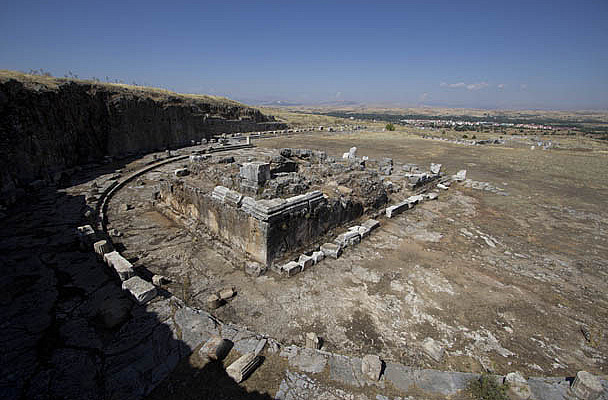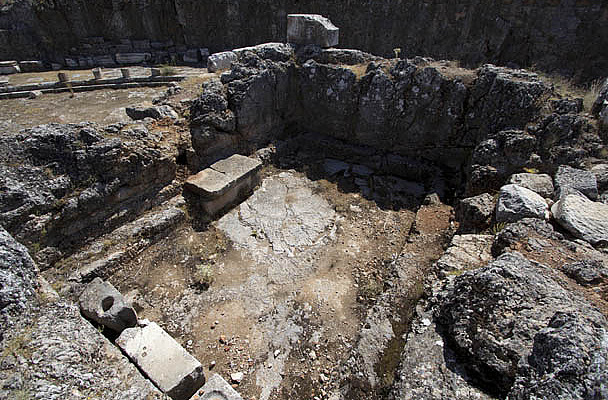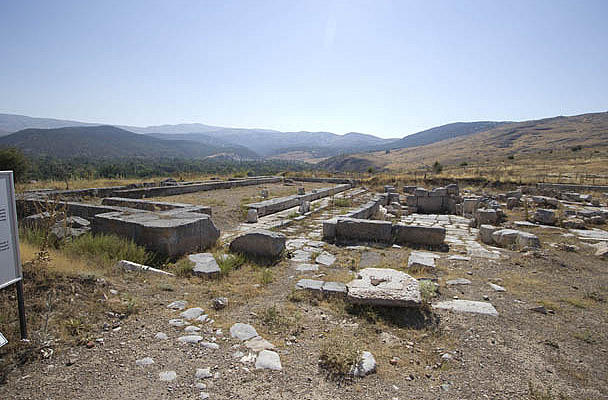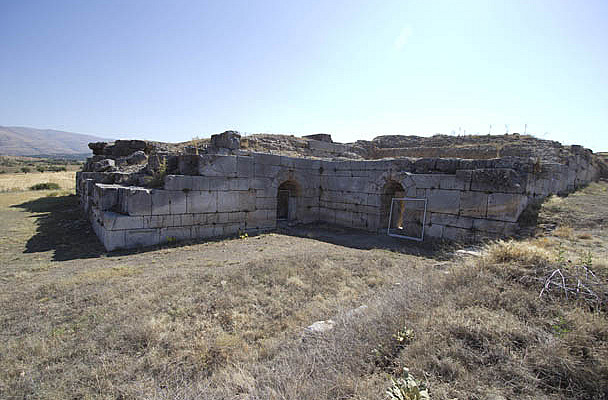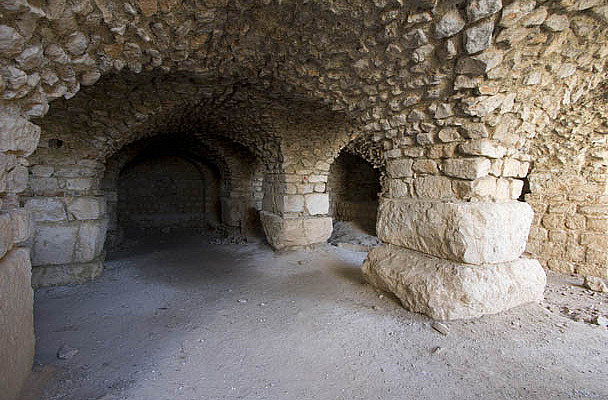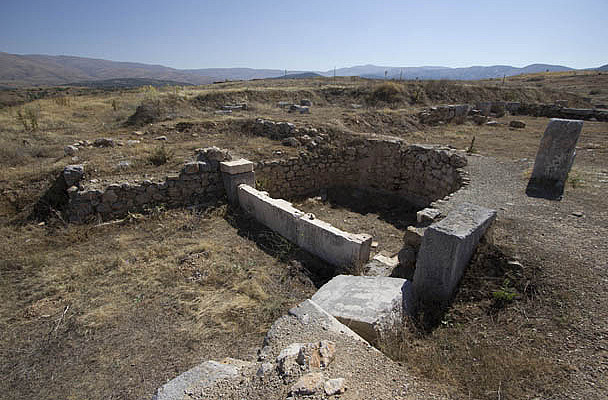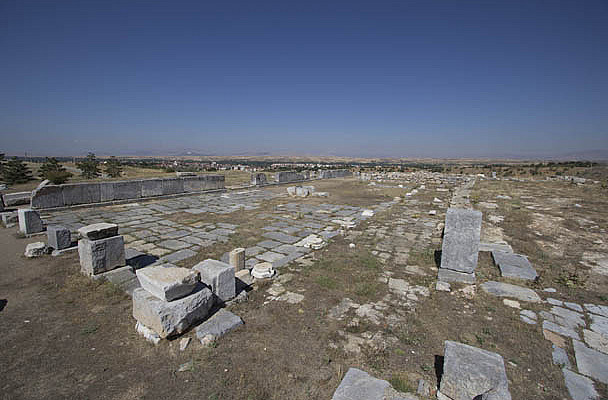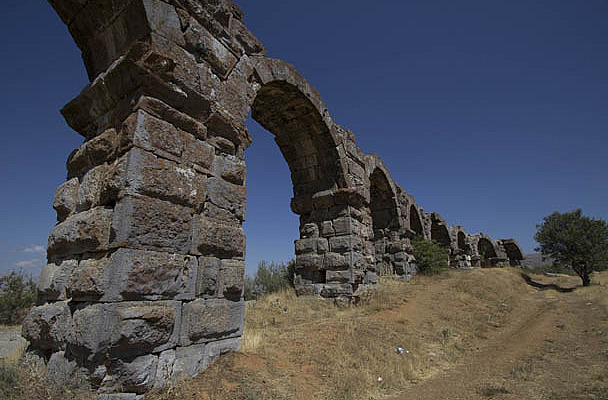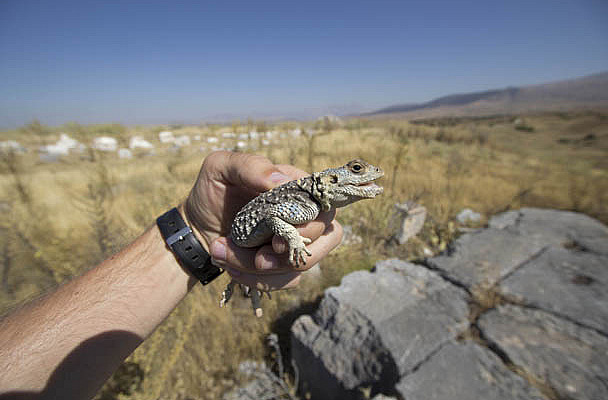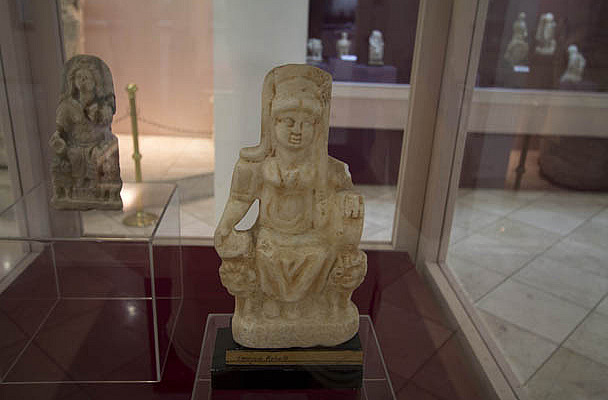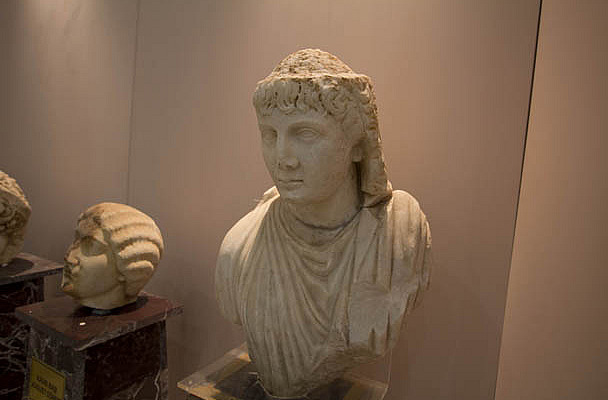Historical Background
Antioch of Pisidia was one of 16 known cities named Antioch (after Antiochus I Soter, the son of the founder of the Seleucid Empire, Seleucus I Nicator). Antioch of Pisidia is located in central Turkey, which was ancient Asia Minor. The region of Pisidia refers to the collection of mountain ranges in central Asia Minor near where the city is located. Antioch actually resides on the southern foothills of the Sultan Mountains just northeast of the river Anthius. Technically, Antioch resides a little north of Pisidia in the region of Phrygia and was known as Antioch of Phrygia as well. However, when the Romans conquered Asia Minor in 25 B.C., the area was renamed Galatia. And so, Antioch would come to be known as Antioch of Galatia during the Roman period too.
Antioch of Pisidia has its beginnings in the first half of the 3rd century B.C. during the start of the Seleucid Empire under the reign of either Seleucus I Nicator or Antiochus I Soter. Antioch was a strategic city both militarily and commercially and it was used as an outpost to protect the major highway that ran from the Aegean Sea through Asia Minor to Syria called the King's Road. When the Romans defeated King Antiochus III and the Seleucids in 188 B.C., Antioch was declared to be a free city. Around 39-36 B.C., Antioch was appointed a client king named Amyntas to rule the Galatian area. When Amyntas died in 25 B.C., Antioch came under direct Roman rule. At this time, the inhabitants of Antioch were predominantly Hellenistic settlers of Phrygian descent, but Caesar Augustus decided to name Antioch as an official Roman colony, and thus many veteran military personnel were settled in the area and the city became known as Colonia Caesarea Antiochia. Colonizing cities in the empire was an effective way to control the populace in place of locally appointed governors who often were unreliable. Eight such cities in the Pisidian (Galatian) region were colonized but only Antioch received the honorific title of “Caesarea” and the right of Ius Italicum (Italian Law).
The city began to rapidly expand toward the end of the 1st century B.C., and with a large population of retired Roman militia, the city was modeled after Rome – the mother city. Many buildings and temples were erected, especially the large temple and sanctuary dedicated to Augustus and the Imperial Cult. One major factor that served to improve the city was the implementation of a new network of roads that were patterned after the Hippodamian system of intersecting right angles. Augustus built many roads throughout the empire, but one notable road was the Via Sebaste (Sebastian Way) built in 6 B.C. that ran west and then south passing through Antioch and reaching Perga along the south-central coast of Asia Minor. Another part of the road ran east toward Iconium and Lystra and the other part west toward Sardis. Antioch of Pisidia was located at the intersection joining the east and the west part of Asia, and a majority of the empire for that matter.
Important to note is that Josephus, the famous Jewish historian, records that Antiochus III, the Seleucid ruler ordered two thousand Jewish families from the area of Babylon to relocated to the regions of Lydia and Phrygia. Antiochus' strategy was to promote loyal citizenship among these trouble territories in the empire (Ant. 12.146-153). This action might account for the Jewish population in Antioch, but no ruins of a synagogue have been discovered to prove a Jewish community resided there.
For the next two centuries, Antioch continue to flourish and grow as a Roman colony. In 295 A.D. Emperor Diocletian redivided the territories of Asia Minor re-instituting the region of Pisidia with Antioch as its capital. Diocletian supported new building projects in Antioch as the capital and increased its culture and commerce, all lending to making Antioch more powerful and renown.
Archaeological Significance
Many parts of Antioch have been partially excavated including the impressive two main streets Cardo Maximus and Decumanus Maximus. The western city walls have been excavated ~3-4 meters showing layers of Roman and Byzantine construction. The foundation blocks of the western gate greet visitors as they enter the stone ramp leading up to the city proper. An inscription found next to the city gate clarifies that the gate was modified later by Emperor Hadrian:
IMP. CAESARI [DIVI NERVAE NEP.] DIVI [TRAIANI FIL. TRAIANO H]ADRIANO AU[G. PONT.] MAX TRIB. POT. XIII. COS III P.P. ET SABINA AU[G...] COL[ONIA]
“For the Emperor Caesar Traianus Hadrianus Augustus, grandson of the deified Nerva, son of the deified Traianus, Pontifex Maximus, Tribunus for the 13th time, Consul for the 3rd time, Pater Patriae (Father of the land) and for Sabina Augusta...the colony.”
The ramp up into the city is Roman and likely original from the time of Augustus. The Roman amphitheater is viewable and mostly excavated with quite a few rows of seats still intact. Tiberius square is outlined with shops, porticoes, the foundation of the Propylon, and at the far end, the stairs leading up to the Temple of Augustus at the highest point in the city. The foundation of the temple and inner sanctuary are visible surrounded from behind by a natural rock hewn apse in a half circle around the backside of the temple.
An inscription was found in 1924 next to the temple but has since been lost. The inscription read:
IMP. CAES[ARI. DIV]I [F. A[VGVSTO. PONTI[F]ICI. M[AXIM]O COS. X[III TRIB]UN[ICIAE.] POTESTATIS. XXII[IM]P.XIIII.P.[P.]
“For the Emperor Caesar Augustus, son of a god, pontifex maximus, consul for the 13th time with tribunician power for the 22nd time, imperator for the 14th time father of the country.”
At the far end of the Cardo is the Nympheum. Mainly the floor and foundation stones of the wall remain in the typical U-shaped design. The Nympheum collected water and distributed it throughout the city.
An elaborate aqueduct system was in place to bring water from the mountains behind the city to the Nympheum. The water source comes from the mountain at and elevation of ~1465 m and is transported 11 km to the Nympheum at 1178 m. The average slope is 2.6% with an altitude drop of 287 m. The flow of water would be extremely fast and so the Romans built an aqueduct with 0.02% degrade down the mountain. ~1 km north of the city ~200 m of the aqueduct still remains. The aqueduct stands 5-7 m high with supporting arches and pillars.
A large Roman bath house complex can be seen down the street from the Nympheum and next to the bath house is the remains of “St. Paul's Church”. This church has no direct affiliation with the apostle and its construction is dated to the 3rd century A.D. But, nevertheless, it is an impressive structure that relates to the development of the early church in the city.
However, the earliest evidence for the presence of a Christian community in Antioch is no earlier than the beginning of the 4th century. When Valerius Diogenes was governor of Pisidia in the early 4th century, he persecuted Christians heavily. But by the mid-to-late 4th century with the onset of Emperor Constantine and the imperial sanction of the Christian religion, Antioch had a least three major church buildings!
Biblical Significance
When Barnabas and Paul left Paphos on Cyprus, they sailed to the port of Perga on the south-central coast of Asia Minor (modern Turkey). John Mark, who sailed with them from Paphos, decided to leave them and return to Jerusalem while Barnabas and Paul traveled on inland to Antioch of Pisidia in central Asia Minor. Here at Antioch, Paul gave one of his most stirring speeches.
As the biblical record goes, after arriving at Antioch, Barnabas and Paul entered the synagogue on the Sabbath and after the readings of the books of Moses and the prophets, they were invited to speak if they had a message for the people. Paul stood and beckoned for the people's attention. He then proceeded to recount the validation of the gospel message beginning with Israel in Egypt (cf. Exd 1:7).
What many people (including myself) have missed for so long is that the substantiation for the gospel is the story of Israel. More specifically, the covenant with Israel and the prophesies given to Israel. It should not be unusual to think about the legitimation of Jesus as Messiah as being the words of the prophets which were then fulfilled in Jesus' life. But most of the time in people's minds the gospel message begins and ends with the story of Jesus. So, I ask, “Why didn't Paul just talk about Jesus and proclaim the gospel with that slant right from the start?” The answer is that we can point at Jesus all day long, but we will fail to convey the scope of the gospel and the significance of the Messiah, if we skip the history, if we skip the people of Israel, if we skip the covenant and promises, we miss the grandeur of God's salvific plan. The gospel does not begin or end with Jesus, it simply culminates with him.
Paul's argument for the Jews and Gentiles in the synagogue that Sabbath day in Antioch began with him telling the people to take a look back at what happened long ago (13:17). The story of Israel bears relevance in every possible way to the Christian life today. To think we have two different stories going on in the Bible is to tear the Scripture apart. Paul's point is that it is ONE story that is unfolding and he and the people at the synagogue were living THAT story. The story was continuing! It started long ago and it will continue long into the future. The best part of Paul's explanation is that how the story began makes all the difference for what is happening in the story at that time (as he was telling it).
Then, after Paul sums up some dozen generations from Jacob to David, he skips to John the Baptist and his ministry of the baptism of repentance and the coming of the Messiah (13:18-25). And, in a tumultuous exclamation, Paul declares to the congregation that God's entire message of salvation through the prophets and the Holy Writings was actually for them (13:26). They were the recipients of that message! The promises and prophesies were not just for their ancestors, they were meant for their own ears, and their children's ears, and their children's children's ears. But to their detriment, the Jews in Jerusalem did not understand the very words they read every Sabbath and so they killed the Messiah, but that only served God's purpose to bring the gospel into its state of fulfillment when Messiah was raised from the dead (13:28-31).
With the story line laid out for the congregation, Paul then finds himself in a position to announce that the good news of Messiah has come at last. It was God's promise to their ancestors that was being fulfilled and it was those promises that they can partake of through Messiah (13:32-33).
If anything was not clear to the community at the synagogue that Sabbath, it was probably how the good news of salvation was promised through the Messiah and was being fulfilled in the man named Jesus from Nazareth. In order to clarify this, Paul points back again to the testimony of Israel's Scriptures. It was the prophet Isaiah in speaking of the coming salvation of the Lord who wrote “I will give you the sacred blessings I promised to David” (Isa 55:3). Who was Isaiah talking about? Paul explains that the prophesies were about Messiah. To prove this, Paul then points to the sixteenth psalm to show how Jesus as the Messiah received that blessing in his resurrection: “You will not allow your Holy One to rot in the grave” (Ps 16:10). The tact Paul uses could not be more cunning....he simply says, “David died and was buried. Therefore, this promise cannot refer to him...it refers to Jesus who you know was killed, buried, and raised from the dead...he is Messiah...think about it for a minute and let me know when it sinks in for you guys...lol” (paraphrase).
If that evidence from Israel's Scriptures were not persuasive enough, Paul turns up the heat and points out the words of another prophet as a warning against failing to hear the testimony of the Scriptures:
“Look, you mockers,
be amazed and die!
For I am doing something in your own day,
something you wouldn't believe
even if someone told you about it” (Hab 1:5).
What a punch line to end a sermon with! It is no wonder that the people were intrigued by these words and begged Barnabas and Paul to return on the next Sabbath and speak again (13:42). From such a powerful message, Barnabas and Paul could not have been that shocked to see nearly the entire town show up at the synagogue the following week. But, the popularity of the Barnabas and Paul made some of the Jews jealous and so they spoke evil of Paul and argued against whatever he said (13:44).
When people are more concerned about the messenger than the message is when pride and jealously find their footing in a person's life. In Paul's case, some of the Jews were concerned with the notoriety that Paul was receiving and were focused on the attention he was getting and could care less about the attention that his message was receiving. Surely they must have felt insulted that so many people turned out to hear him. But, they probably were also offended that they were not saying and doing things like they do. Barnabas and Paul were different and they were reaching people with a different message, but one the people needed to hear. They were not in it for their glory; they were doing it for God's glory. What was important was not that Paul was in front being heard but that the gospel was being heard. Those who care about truly preaching the gospel will not quibble over who is on the stage or what name is on the sign in the front of the building. Unfortunately, such labels often generate an unintentional sense of devotion to the messenger (or the place) and not the message. It is human tendency to attach ourselves to people or places we tend to like, but if we let that govern what we say and do (in essence, what we believe), we have lost our love of the message and have turned our eyes solely to the messenger.
Pride and jealously can be subtle or overt. It starts with people thinking more of themselves or someone else in place of the gospel message. That sort of inflated thinking causes them to draw lines, assign loyalties, and push away others who are not in complete agreement with them or see everything their way. If Jesus was the focus of everyone's message, what causes divisions? My primary answer: arrogance. In Paul's experience in Antioch, arrogance was at the basis for the jealous of the Jewish leaders. Because of their arrogance and damaged egos, the Jewish leaders stirred up other people in the synagogue and incited a mob and ran Barnabas and Paul out of town (13:50). It is almost as if the disdain of the Jewish leaders was part of a self-esteem protection mechanism onset by their own conception of self-importance and authority. Such behavior can only be a manifestation of the hardness of one's heart and their own deluded, selfish thinking. People can be very loving in one category but that does not mean that won't be nasty and unkind in another. In the end, Barnabas and Paul shook the dust off their feet to symbolize the rejection of the gospel in that city and went on down the road to Iconium (13:51).
Another place Paul mentions Antioch of Pisidia is in his second letter to Timothy where he writes, “You know how much persecution and suffering I have endured. You know all about how I was persecuted in Antioch, Iconium, and Lystra – but the Lord rescued me from all of it” (2 Tim 3:11). Paul is alluding to the time when the Jewish people at Antioch (in Pisidia) turned on him and incited a mob to attach him and Barnabas and run them out of town. When Paul and Barnabas were previously in Jerusalem, they also experienced the animosity of the Jewish people toward the message of the gospel as exemplified by the delight of the Jews when King Herod killed James and arresting Peter (Acts 12:1-3). The Jews were out for blood and the disciples knew this. Yet even despite such violent persecutions, the believers still communed together, taught the gospel, and prayed fervently against the darkness of the world. Paul's conclusion of the matter is that “everyone who wants to lives a godly life in Christ Jesus will suffer persecution. But evil people and imposters will flourish. They will deceive other and will themselves be deceived” (2 Tim 3:12-13). Paul endured unjust treatment on multiple accounts, but he knew it was all part of the deal for following Jesus.






















